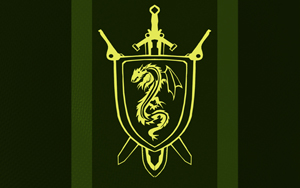Origins
Rinascimento is an urban culture that originated in 2001 Honolulu. Graphic Artist Matt Maeda was studying existing urban cultures and created the outline for Rinascimento culture. This outline originally had Card Deuling, Masiquen, Role Playing Games, Miniatures, and Magic. Magic later on became more specific and was replaced by Cardistry.
Rinascimento first emerged in the Honolulu with paper based gamers who often played trading card games. The games were competitive and could be played in teams. This at the time was being accompanied by role playing games, a story based game that you play the role of the characters in the story which the game master is reading/telling. This usually led to the interest of Role Playing Games on consoles. Particular styles of dress arose among fans of these games.
The Fine Arts have a relationship to rinascimento because of its historic significants. Cangiante and Stumato come from the paintings done by the a few of the old masters which are often mentioned in history. The style of Art Nouveau comes from the art on tarot cards. Art Nouveau, Cangiante, and Stumato can sometimes be found on card art, game art, and book art.
History
Proto-Rinascimento
Fantasy
Rinascimento was influence by a number of 19th century authors who were fascinated by the medieval ages. Many of these authors helped set the idea of the Fantasy genre. The modern idea of fantasy might have started with George MacDonald who inspired many authors with his fairy tales and fantasy novels. A few inspired authors are J.R.R. Tolkien and C.S Lewis, both important to the shapings of what we see as fantasy today.
Fiction Story Telling
Several of the works which effected rinascimentos conception before it was even named. Fantasy genre is dominated by medievalist form because of the success of Lord of the Rings (1954) by J.R.R Tolkien and Chronicles of Narnia (1956) by C.S Lewis. Conan the Cimmerian (1932) by Robert E.Howard was also seen as one of the more inspirational stories of proto-rinascimento. Those who read these stories usually found them at the library or had an interest in books. Certain elements from the library fashion can still be found in rinascimento fashion today.
Development of concept
Symphonics
The date the term was 2001 when used to describe the type of people who enjoyed the sound of songs with a symphonic element usually generated by a keyboard, guitars, and sometimes accompanied by opera vocals and a full choir. The scene takes its name from the italian word for "Renaissance" and in french it is "Rebirth".
Renewed Fantasy Interest
Several rpg, card, and miniature game titles have been credited for bringing a renewed interest in fantasy as well as being influencial in the concept of rinascimento. Most notable are Warhammer () Games Workshop, Magic the Gathering (1993) by Wizards of the Coast, and Dungeons and Dragons () by Wizards of the Coast.
Many who were apart of this fantasy scene were the geeks, nerds, goths, book worms, board game geeks, card game geeks, strategy game geeks, and RPG geeks.
Later Media Influences
Video Games also made their mark by making multiple fantasy based worlds. Some of the more influencial titles were Guild Wars (2005) by Arena.net, Warcraft III (2002), by Blizzard, Final Fantasy Tactics (1996) by Square Enix, Those who played these games eventually gained an interest to reading fantasy fiction stories and/or watched fantasy related films.
The films which also contributed to the rinascimento scene were Pirates of the Carribean (2003) directed by Gore Verbinski, Lord of the Rings Trilogy (2001) directed by Peter Jackson, Harry Potter movie series (2001) story by J.K. Rowling.
Subcultural Boundaries
Rinascimento co-existed with several types based on interest. Victorian Rinascimento are those who celebrate the time period which many of the writings were done, than the fantasy of stories or the historical accurate. Historical Rinascimento usually leans more towards elements of the middle ages and historical accuracy more than fantasy. Fantasy Rinascimento leaned more towards the worlds of fiction then the set time period or the historical accurate. As rinascimento continues to develop it will surely become more diverse.
Many who didn't want to say the word of rinascimento had made a short hand version called "rin".
Early Rinascimento

Official Urban Culture Flag: Rinascimento
Gastro Rinascimento (1980-Present)
The gastro movement started in the 1980s and is seen as proto-rinascimento. They were interested mostly by Paper and Pencil RPGs, Board Games, Collectible Cards, and Miniature games. Many people would base their lives around the game, this led to bad health and eating habits. It wouldn't be until paleo-rinascimento that eating habits would improve. During this period it was common to see many people playing paper and pencil RPGs at their schools after school. Many who were participating in these hobbies were labelled under the umbrella term Geek, Nerd, or Dork.
Paleo Rinascimento (2010-Present)
The paleo rinascimento movement was being moved by Trading Card Games, Miniature Click Games, VG RPGs, VG Strategy Games, and VG MMORPGs. There were many people who worked together to help form the identity of paleo rinascimento, many of them came from different interests of fantasy readers, gothic, nerds, geeks, academics, magicians, and gamers.
